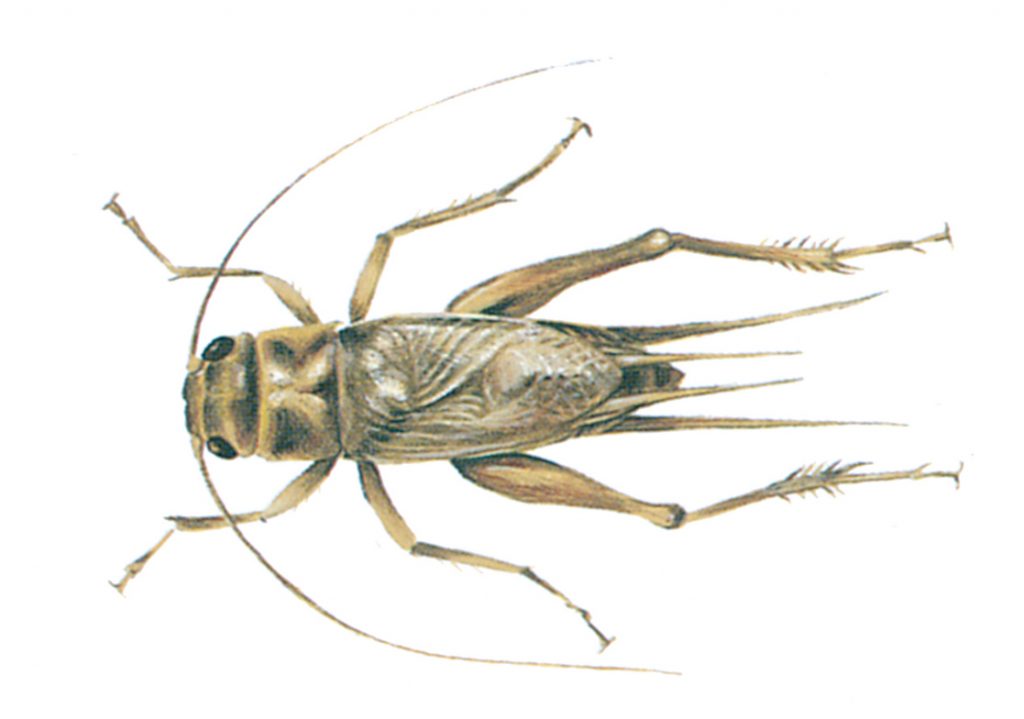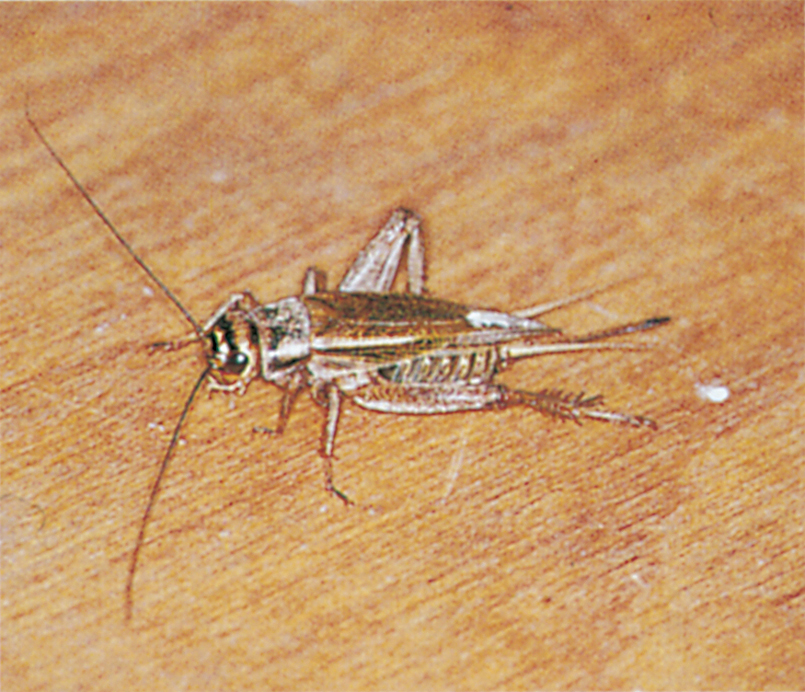(Latin: Acheta domesticus)

House crickets are closely related to the grasshoppers, and like them they have the hind legs modified for jumping. The adults are 2 cm long and pale grey-brown with a black pattern on the head and thorax. They have two pairs of wings, of which the back pair is used for flying. At one time house crickets were associated with bakeries, but this is no longer so. Nowadays they are more likely to be found in warm ducts and in panelling behind heating installations, quite frequently in breweries.
House crickets often occur in new buildings and this is probably because such places provide good shelter and food, and half-finished houses are easy to enter. It is also possible that these insects may, in some cases, be brought in with building materials or packaging.
In northern Europe house crickets do not normally survive outside during the winter and most of them come indoors at this time. However, they can survive throughout the year, and will sometimes multiply in enormous numbers on refuse dumps where decomposing waste is producing heat.
They have a characteristic chirping, which has been likened to the noise made by very young chicks. In. former times the cricket on the hearth was a familiar ‘domestic’ animal, and a well-known character in many stories and fables.

It is only the male cricket that sings and he does so to attract the females. Each male sits in its own little territory and sings, the actual sound being produced by rubbing part of one wing against the other wing. The male also has a short, aggressive piping note, which is heard when another male tries to enter its territory.
A love-sick cricket may sing for hours at a time. One industrious zoologist found that a single cricket chirped no less than 42,000 times in a period of four hours.
Perhaps there are not many people in Europe who now keep crickets, but in ancient China the chirping was so highly esteemed that the ladies of the Imperial Palace kept crickets in small golden cages on their pillows, so that they could fall asleep to the song.
Crickets feed on almost any kind of organic matter. They prefer soft plant matter, but will also eat other insects and carrion. On the whole it is true to say that crickets are quite harmless domestic animals




